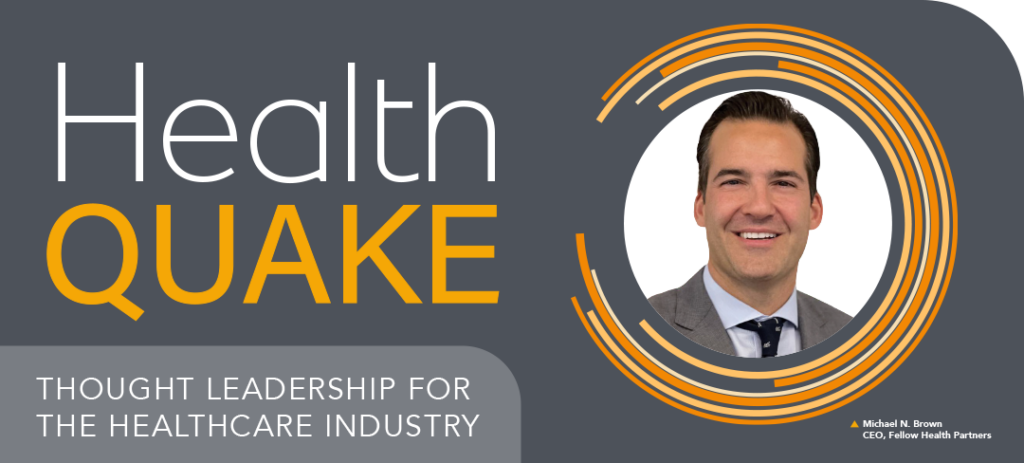
by Michael N. Brown, CEO and Ed Berenblum, COO
Summary: In the complex ecosystem of healthcare, where the intersection of patient care and financial viability converge, revenue cycle management (RCM) serves as the cornerstone for the financial health of healthcare organizations. At its core lies a meticulous process aimed at capturing, managing, and optimizing revenue from patient services. However, maintaining accuracy and integrity within this intricate web of transactions and data flows is painstakingly difficult. Even minor discrepancies in patient data, coding errors, or inaccuracies in claims can lead to significant revenue losses and compliance violations.
Errors can stem from multiple sources: A keystroke error at the registration desk causing a patient’s name to be spelled incorrectly, a healthcare provider noting an inaccurate diagnosis or procedure code, or a claim being sent to a patient’s expired insurance plan – just to name a few. Small errors quickly add up to sizable performance gaps. Too often, RCM professionals rely on staff training and experience to maintain or improve execution – otherwise known as the “Traditional Approach”. The failure of this approach can be measured by the initial denial rate, which, for physician practices, is generally in the 12% to 18% range. Even though these denials are later appealed and often overturned, the cost of delayed payments and additional staff is significant.
The most effective solution to reduce errors and improve collection rates is to institute a quality management system borrowed and adapted from manufacturing operations, which for the purposes of this writing we will alternately use the terms “Industrial Approach” or Quality Control (QC). These efforts require that each and every process is broken down into measurable components, with defined expectations at each step. Standard measurement tools must then be created to determine Key Performance Indicators (KPIs), showing levels of staff adherence to each step. This approach yields performance levels significantly higher than the Traditional Approach.
Unfortunately, while QC is routinely utilized in hospital and clinical operations, RCM operations rarely, if ever, monitors and measures the adherence and execution of its processes. This is because implementing QC requires significant resources: finances, burdensome effort/time, experienced staff and/or consultants. However, if properly implemented, the return on investment (ROI) will be exponential. A few easy targets a QC program can tackle within the RCM workflow are as follows:
95% coding accuracy is the assumed standard across hospital and physician organizations. However, without constant monitoring, errors result in lost revenue via under-coding, payor takebacks due to over-coding, or non-compliance with payor policies.
Claim scrubbers are utilized industry-wide as a quality tool, but if the resulting claim rejections aren’t consistently monitored, corrected, and resubmitted on a daily basis, you’re at risk for untimely filing.
RCM professionals often staff their A/R departments on the basis that account should be resolved on an average of three touches by a collector (approximately twenty minutes per account). However, in our experience, organizations that operate using the Traditional Approach often require seven touches to achieve resolution/payment. This can usually be traced back to training gaps and/or improper use of work queues. Obviously, an operation that requires seven touches to resolve an account will require more than double the staff than one that requires only three.
Compare and Contrast:
- A Traditional Approach organization with accuracy rates of 80% in patient registration, 90% in coding and 70% in collections will need to re-work up to 60% of accounts.
- An Industrial Approach/QC’d operation with 95% registration, 95% coding and 95% collections accuracy will only need to rework up to 15% of its accounts. Naturally, the cost of one vs. the other will be dramatically different.
Once the QC program is up-and-running, Quality Assurance teams can continuously monitor changes in regulations, update coding practices, and conduct audits to ensure adherence to guidelines such as HIPAA, ICD-10, and CPT coding standards. Trends, patterns, and inefficiencies within the revenue cycle can be identified through use of KPIs, such as revenue cycle duration, clean claims rate, denial rate, and days in accounts receivable. Organizations can leverage this data to apply corrective measures such as corrections to system inputs, programming, standard operating procedures, and staff training focused on identified knowledge gaps – just to name a few.
Once corrective measures are in place, it’s time to start quantifying ROI. The formula is as follows:
ROI ratio = (net benefits / costs) x 100%
For example, if your quality improvement project costs $1MM and generates $1.5MM in benefits, your net benefits are $500,000. Your ROI ratio is:
ROI ratio = ($500,000 / $1MM,000) x 100% = 50%
This means that for every dollar you invest in your quality improvement project, you get back $1.50 in benefits. Add to that the additional perceived and financial benefits of increased client satisfaction, new client referrals, and employee satisfaction/retention.
Quality control serves as the linchpin of success in revenue cycle management, safeguarding accuracy, compliance, and financial integrity. Through a combination of advanced technologies, stringent compliance measures, and data-driven insights, RCM organizations can optimize precision and profitability.
Does your RCM provider utilize a QC program?